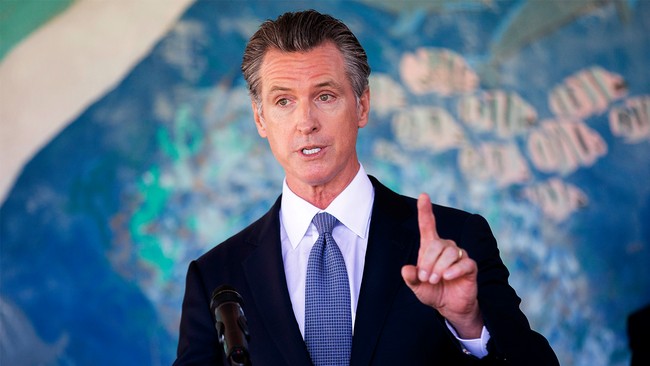Every day a blue and gold “Yantar” train pulls out of Moscow on a 1,285-kilometer journey to Kaliningrad, a Russian exclave of half a million people on the Baltic Sea wedged between Lithuania and Poland.
On Friday, March 19, 2027, though, the electricity in a wide swath of eastern Lithuania goes out, and the train grinds to a stop an hour short of the border.
Initially, the passengers think nothing of the stop and the outage, but as hours pass, puzzlement grows. By evening, conductors pass through the cars, explaining that there was no word on when power would be restored and that since passengers don’t have visas to enter Europe’s combined visa zone, they can’t be allowed off the train. Cell phones are still working, and worried and hungry Russian passengers begin to post distressed tweets and videos to TikTok; one claims an 82-year-old grandmother is suffering a medical emergency.
Around midnight, the governor of Kaliningrad announces that he is dispatching a contingent of border police into Lithuania to provide food and supplies. The convoy of marked police vehicles barrels through a lightly guarded border crossing and down the A7 highway; U.S. intelligence later assesses that most of the Russian force was made up of special forces veterans, toughened on the front lines of the Ukraine war, but wearing border police uniforms.
Lithuanian police and a few army units give chase to the Russian convoy, which arrives trainside and begins to unload food and water. In Vilnius, an emergency operations center suspects that the electrical outage stems from a cyberattack originating in Russia. Duty officers awaken the prime minister and defense minister. Phone calls fly between Vilnius and Kaliningrad and, later, Moscow. Russian authorities insist they are just protecting their own citizens and helping preserve Lithuanian sovereignty by ensuring Russian passengers don’t disembark.
By Saturday morning, the train is surrounded by concentric circles of Russian forces and Lithuanian military and police. Around noon, six shots ring out. Three Russian police fall, two dead, one injured, and one Lithuanian police officer is wounded. Lithuanian spotters claim the shots originated from the train, but the situation escalates regardless. Less than an hour later, the Kremlin announces it is sending troops into Lithuania to secure and evacuate the train and 20 minutes after that, an armored column crosses the border from Kaliningrad — a column so large and heavily armed that no observer could believe it had been gathered in just a few hours.
In Moscow, Vladimir Putin releases a statement explaining that he is only sending a rescue operation; this is not, he promises, an invasion. The Lithuanian defense minister places a panicked telephone call to NATO headquarters in Brussels as the prime minister places an equally panicked call to President Donald Trump in Mar-a-Lago. In each call, the message is brief: Help.
The above scenario is fictional — for now — but it or something like it feels all too possible. Ask those whose job it is to worry about conflict where war might break out in the next five years, and the Baltics — the trio of Estonia, Latvia and Lithuania that broke away from the Soviet Union after the fall of the Berlin Wall, and a region which Putin would love to reclaim — are on nearly every expert’s list.
But it’s not the only one. This year has already seen two of the world’s most-watched potential conflicts erupt into reality — with missiles flying over the India-Pakistan border in May and then in June, Israel going to war with Iran over its nuclear weapons program. While the India-Pakistan skirmish quickly came to an end, the strategic outcomes of Israel’s immediate tactical success in Iran remain very much an open question.
This summer marks the 80th anniversary of the end of World War II, and while that kind of giant conflagration may seem remote, the reality is that on most days, the world lies closer to major regional or even global conflict than it might appear. The rise of new disruptive technologies and asymmetric advantages, like autonomous weapons and drones, will likely make the years ahead more unstable in ways that haven’t been considered.
Analysis of recent U.S. intelligence testimony and reports, as well as interviews with a half-dozen geopolitical experts make clear that in addition to the Middle East, there are five high-profile, high-risk conflicts that conceivably could unfold in the next five years, all of which could have profound and serious consequences for the U.S. — militarily, economically or geopolitically. These are high-tension areas where a military incursion, akin to Russia’s 2021 invasion of Ukraine, spiraling escalation, or even just a bad 24-hour period of misunderstandings, mistakes, military accidents or miscalculations could lead to major showdown, loss of life and global ruptures.
War is unpredictable and usually harder to win than one imagines at the start — a lesson the U.S. relearned the hard way in its two-decade-long conflicts in Afghanistan and Iraq — but that has rarely been a deterrent. To the contrary, war has been one of the few constant and unstoppable human activities since the earliest of recorded histories, despite it often proving ruinous for both aggressors and defenders.
Here's a brief guide to the hottest of the world’s hot spots, the places where the illogical logic of war is most likely to take hold next.

Aggrieved Nuclear Neighbors
India-Pakistan
The Background: For four days in early May, it looked like the world might face one of its most feared nuclear scenarios — a serious conflict between India and Pakistan, two countries with nuclear arsenals that are not, shall we say, controlled and secured as thoroughly as experts would prefer. Tensions escalated following a late April terrorist attack in the disputed Indian-administered region of Jammu and Kashmir, resulting in several days of non-nuclear missile exchanges that targeted military bases on both sides of the border. Before a ceasefire (that may or may not have had a boost from Trump), it was the most serious conflict between the countries in decades.
Arguments over the countries’ border regions date back to the original British partition in 1947, which created a Hindu-majority India and Muslim-majority Pakistan out of the UK’s former colony. Skirmishes have arisen ever since — including wars in 1965 and 1971, the latter which resulted in a new “Line of Control” between Indian Kashmir and Pakistani Kashmir. More recently, the countries fought in the 1999, but have generally kept the peace since 2003, even as low-level border fighting has killed dozens. India continues to complain — with reason — that Pakistan supports terrorist activities on Indian soil.
The Stakes: India and Pakistan probably lie closer to an exchange of nuclear weapons than any two countries on the planet. The Bulletin of Atomic Scientists estimates that Pakistan possesses around 170 nuclear weapons. India, similarly, is estimated to have about 180 weapons. Any nuclear exchange in South Asia would obviously have huge global environmental and economic consequences, even beyond the immediate loss of life, between devastated cities and fallout-laden winds spreading across the broader region. Even if other major powers like the U.S. and China escaped being drawn into the war itself, “nuclear winter” effects in the atmosphere would dramatically affect food production in neighboring China and even further beyond; one 2019 Rutgers study calculated that resulting famines would affect “millions — or even billions.”
Why It’s Likely: The May conflict underscored that once conflict begins there aren’t many escalatory options for either side before you get into real danger zones. “Once you start really damaging the other side’s military bases, you start degrading their command-and-control networks, and their ability to calibrate a response is going to decline,” says Christopher Clary, a nonresident fellow with the Henry Stimson Center and a former Pentagon South Asian country director. Intelligence leaders worry about India and Pakistan specifically because the conflict is on a short and hard-to-understand fuse. “You can see the potential for it to go from zero to 60 despite the fact that neither side may want to go to war, because the domestic politics on both sides push them to escalate, each playing off the other,” says Avril Haines, who served as former President Joe Biden’s director of national intelligence. One particularly worrisome facet is that Pakistani military doctrine is believed to have a low threshold of use of nuclear force against India — and domestic political pressures mixed with the relative immaturity of both countries’ arsenals and doctrines could mean that any nuclear exchange spirals into a rush to use dozens or scores of weapons as quickly as possible, resulting in hundreds of nuclear attacks during just a few days of war
Why It’s Unlikely: Simply put, and to state the obvious, a large-scale war between India and Pakistan would be bad for both countries. “The biggest driver of peace between India and Pakistan is the fact that both have other urgent priorities — for India that is a very serious strategic competition with China, as well as a developmental agenda to try to propel India into middle-income status,” Clary says. As for Pakistan, he notes that it faces insurgencies in the region of Balochistan as well as Pashtun areas along the border with Afghanistan. “Those are of a very serious nature that really should occupy an enormous amount of attention,” Clary says.

The Most-Feared Invasion
China-Taiwan
The Background: Ask almost anyone about the highest-consequence conflicts of the years ahead and they’ll point to the Taiwan Strait, where China’s Xi Jinping has his eyes set on conquering Taiwan. Leave aside that the island has never actually been controlled in its history by the same government as mainland China. Xi also recognizes what Putin saw about Ukraine — the population of the island is moving away from him and any interest in uniting with China.
The Stakes: Just as the Baltics might very well be the flashpoint that tests NATO, Taiwan is seen as a litmus test of who will lead the global order of the 21st century: the United States or China? While there are no formal defense treaties in place, the U.S. has long said it would back Taiwan but many doubt whether Trump is as fully committed to that promise as past administrations. Moreover, wargames by Washington think tanks have raised troubling questions about whether the U.S. would or could really fight China over Taiwan — U.S. weapon stockpiles are unlikely to last long into a multi-month conflict with China, and wargamers calculate that huge U.S. death tolls might result, outpacing those of Vietnam and Korea combined in a matter of months.
If China took Taiwan — either without international opposition or despite it — the aggression would instantly rewrite the geopolitics and alliances of the Pacific, as countries across Southeast Asia and the Pacific rim that have long allied themselves first with the United States reconsider which superpower might better serve their long-term economic and security interests. A Taiwan takeover could even spur nuclear proliferation in nervous countries like South Korea — and Japan — who might doubt whether when push-comes-to-shove the U.S. would be there when needed in the future.
What Makes War Likely: Xi is believed to have set a 2027 deadline for his armed forces to be ready for an invasion of Taiwan. The country is undergoing a massive build-up of potential amphibious forces and appears to be holding more regular exercises. “They practice [Taiwan scenarios] all the time, because this is the most important thing their military might ever get called upon to do,” says Jon Finer, a former deputy national security adviser in the Biden administration.
What’s more, Xi has fashioned himself as a transformational figure in Chinese history and as the 2020s pass and he eyes his legacy and the end of his time in office, Taiwan is one of the major “unfinished” pieces of business left. He’s strengthened control of Tibet and taken full control of Hong Kong, yet Taiwan sits there drifting further away. As the domestic political situation in Taiwan develops, Xi may feel a window closing to act — and do just that.
What Makes War Unlikely: It’s not clear that Xi has much faith in his military, which is not only riddled with corruption but also inexperienced. There have been multiple purges and plenty of signs that Xi isn’t totally in control of the politically powerful institutions of the army and the navy. A cross-strait invasion of Taiwan would be one of most ambitious and hardest military operations ever undertaken in world history — and China would be doing it with a military that despite lots of training and advanced technology has precious little real-world experience. China last fought a war in 1979, a brief conflict with Vietnam, and has effectively no active-duty officers or personnel who have actual combat experience. Xi is surely also drawing some caution from Russia’s troublesome invasion of Ukraine — which, on paper, was a far easier and manageable challenge by a military with far more recent combat experience than China possesses.
There are also plenty “short of invasion” options Xi could try to implement and that China appears to be regularly practicing for — including gray zone actions like a blockade or trying to enforce customs duties on goods leaving or entering Taiwan. The end effect over time might very well end up the same as an outright takeover but would be a much harder fight for U.S. politicians to consider entering. Would America really risk the lives of an entire carrier battle group or two to break a customs quarantine of Taiwan?

Testing NATO
Russia and the Baltics
The Background: The three Baltic countries are tiny in size and population, which makes them a tempting target for Russia seeking to reassert itself. Putin’s goal in any Baltic incursion would be two-fold — both to regain territory he believes historically should be part of Russia, but also to test NATO and Europe by targeting some of its smallest and most isolated members.
Gabrielius Landsbergis, who until last December was Lithuania’s minister of foreign affairs, says he worries about a scenario like the “rescue force” dispatched to the stalled Kaliningrad train. “There’s sometimes a misunderstanding as to what the conflict could look like,” he says. He explained that Russia may be trying to desensitize its neighbors by staging small but mysterious attacks, like an incendiary device on a plane, or an arson attempt in a shopping mall. “This is what the war looks like — it’s not hundreds or thousands of Russian troops pouring in, but something much more mundane. In these hybrid scenarios Putin would try not to trigger Article Four or Five as long as possible, until basically he would get his goals.”
The Stakes: An attack on any of the three Baltic countries — all of whom joined NATO as part of its 2014 expansion — would pose an immediate test to the U.S. commitment to the longstanding treaty alliance. “It would be Russia testing the Article Five commitments to those NATO allies,” says Evelyn Farkas, executive director of the McCain Institute and a former Pentagon official. It is a question and conundrum that haunted Cold War presidents — would America really risk a nuclear attack on, say, Chicago or Seattle, to defend West Berlin back then or, in modern times, Riga, Vilnius, or Tallinn? Donald Trump’s on-again-off-again support for Europe and NATO makes the question all the more pointed — and, potentially, more enticing for Putin. And even if the U.S. were to back away from initially supporting a Baltic incursion, what if other NATO countries rush in and Russia retaliates with direct attacks on, say, Poland, Germany or the United Kingdom, allies that the U.S. might be more willing to defend?
Why It’s Likely: Putin has been clear for years about his desire to reconstitute the Soviet Union and the imperial Russian empire by reclaiming countries including Georgia, Moldova, Ukraine and the Baltics. Moreover, he also wants badly to overthrow the Western liberal order, which in his worldview, is responsible for diminishing Russia. Nothing would unravel the Western order faster than demonstrating that its security alliances are an empty promise by letting one or all of the Baltic states be re-occupied by Russia.
Why It’s Unlikely: Much of the arc of any Russian attack on the Baltics hinges on the arc of the war in Ukraine, which continues to chew up Russian military might faster than anyone imagined. Ukraine has recently estimated that Russia has suffered a million casualties — dead, wounded and missing — in the three-year-old war. “Since January 2024, Russia has traded vast quantities of equipment for mere meters of ground,” a CSIS report concluded this spring. In congressional testimony in April, the head of U.S. European Command, Gen. Christopher Cavoli, said the U.S. believes Russia has lost an estimated 3,000 tanks, 9,000 armored vehicles, 13,000 artillery systems and over 400 air defense systems just in the past year.

The Tensest Border
India-China
Background: Like its border dispute with Pakistan, India’s long-running border tensions with China trace back to British colonial times — Britain and Tibet settled on a border with India in 1914 that China has never accepted. In 1962, Chinese troops tried to occupy what was considered Indian territory, leading to a month-long conflict that left a couple thousand dead. At the conclusion, China redrew the border and named it the “Line of Actual Control.” Further fighting in 1967 killed several hundred troops on both sides and another clash was narrowly averted in the 1980s, when China misread an Indian military exercise as a possible attack. Since then, the militaries of both countries have become some of the largest and most advanced in the world.
The 2,500-mile border with India is indicative of a larger geopolitical reality for China: It exists in one of the most unfriendly geographies of any country in the world; it has land borders with 14 neighbors, more than any other country, and disputed maritime borders with another seven. In their book, “China’s Search for Security,” political scientists Andrew J. Nathan and Andrew Scobell pointed out that those neighbors include four of the world’s eight other nuclear powers and that China has gone to war with five of its neighbors since World War II.
The Stakes: On the one hand, the stakes of a conflict couldn’t seem less worth fighting over — some of the remotest and least habitable mountain valleys and passes in the world, an area known as “the roof of the world,” situated in some of the least populated corners of two of the most populated countries in the world. And yet, like many conflicts, it’s not about where the war might start — it’s about where the war might lead. Geopolitical experts worry about the reputational risk both countries would quickly feel as any fighting erupted — China might see fighting India as necessary to chill other regional adversaries — or as a way to embarrass the U.S. with a key Indo-Pacific ally.
Any potential conflict faces a serious asymmetry: India has far more population centers within range of Chinese munitions than China does on its side. But so far, India’s tensions with China have been a boon to the United States — helping India to align itself more closely regionally with the U.S. and also moving it away from its traditional reliance on Russian arms purchases as Russia and China grow closer together.
Why War Is Likely: Simply put, the region is ripe for misunderstandings and escalation — and today, the tension is still so deep-seated and explosive that both Chinese and Indian troops are prohibited from carrying guns along the border; in 2020, skirmishes between the armies high in the Himalayas in the remote Galwan Valley, not far from the site of the 1962 fighting, were fought in brutal hand-to-hand combat, with fists, rocks, fence posts and even clubs wrapped in barbed wire. At least 20 Indian troops were killed, some of whom died falling down the mountainside, and perhaps as many as 40 Chinese troops.
Another factor that could make war more likely is that the two countries lack any of the normal guardrails, treaties and routine channels of conversation that can help de-escalate a crisis as the Moscow-Washington “hotline” prevented miscalculations during the Cold War. China has routinely and expressly eschewed setting up such channels with the U.S., India and other countries, seeing such guardrails as an effort to constrain China’s rise unfairly.
Why War Is Unlikely: As high as tension might be on the ground, it seems unlikely that the leadership of either India or China would want a war over such remote territory — and there would likely be quick and serious international pressure for de-escalation. Moreover, both countries face enormous economic pressure at home — India needs to keep its growth steady, and China is already entering the final years of a working-age population boom. “A major fight with the other one-billion person-plus country in Asia — it is hard to imagine that is compatible with keeping the economy afloat,” Clary says. Recent moves seem to show China is actually trying to strengthen relations with a wary India.

Never-Ending War
The Korean Peninsula
The Background: Almost three generations after it began, the Korean War has never officially ended, and both the highly developed western economy of the South and the barely agricultural-age North feel it. The 155-mile-long demilitarized zone between North and South Korea has existed so long — some six decades — that it’s grown into one of the wildest forests in the world, packed with thousands of diverse wildlife species. Along its edges, about 2.5 miles apart, the outer perimeter of the DMZ is one of the most heavily fortified and defended places on earth, with artillery and land mines at the ready, and all of Seoul in easy missile range of the North.
The Stakes: Sky high. There is no regime in the world where the U.S. and the West know less about its happenings, power dynamics or plans than the so-called Hermit Kingdom of North Korea. It’s an enormously difficult intelligence target and one that consistently surprises the West. The U.S. still has 30,000 troops on the peninsula to help secure South Korea, all of whom are in the crosshairs of the opening hours of any major war.
Why War is Likely: North Korea is a slowly failing country, racked by famine and crippled from within by the government’s brutality, and Kim Jong Un’s leadership has done nothing to turn around its future. His ace card is his nuclear weapons, which have protected him from the fate of dictators like Saddam Hussein and Muammar Qaddafi. If Kim senses an opening and weakness or — rightly or wrongly — feels an existential threat to his rule from the West, anything is possible.
The Korean peninsula is also a region that might see very serious second-order consequences if any of the other conflicts on this list actually unfold. If, for instance, China moves against Taiwan or the U.S. balks at defending the Baltics, it could cause countries to doubt the security commitments of the United States against North Korea or China — and intelligence experts fear that South Korea or even Japan might attempt to go nuclear in response. Recent public opinion polls in South Korea show 70 percent of the country supports developing its own nuclear arsenal — numbers and political pressure that would surely rise if there were doubts about whether the U.S. would back the country in a fight.
Why War is Unlikely: While North Korea has developed nuclear weapons and the pieces of a delivery system, it’s not entirely clear how confident North Korea should be in its ability to successfully launch and land a nuke. According to recent assessments, the Korean peninsula is as stable as it has been in years — and with Trump in the White House, who famously hosted him twice for summits, Kim may feel as secure as he has in a while. “I don't think that Kim Jong Un needs it right now. I don't think he needs a conflict,” says Farkas, the former Pentagon official.
Of course, geopolitics is uncertain — and history rarely unfolds in predictable ways, so there are always wildcards and, as former Secretary of Defense Donald Rumsfeld would say, “unknown unknowns” when confronting the world as it is and not as we would like it to be. And what has many nervous in Washington and in friendly capitals beyond is that the country that used to be the largest force of stability on the planet — the United States — now feels like the world’s biggest wildcard.
While the U.S. might not seem at imminent risk of being drawn into a major conflict, few in foreign capitals know how to navigate the “realm of the possible” when it comes to the current state of U.S. interests. What should allies and adversaries make of the sometimes bizarre and unpredictable bellicose rhetoric of the Trump administration and what it could portend for U.S. tensions in the years ahead? Just how serious and actionable is the interest in the Oval Office for making Canada the 51st state or taking Greenland away from Denmark, two countries that have actually been among our staunchest allies in the 21st century thus far? Then there’s the fact that for the first time this year, the nation’s intelligence leaders elevated foreign illicit drug cartels to the top spot on the list of threats to the United States — citing the pipeline of fentanyl and other drugs that continue to kill more than 50,000 Americans a year. The Trump administration seems serious — at least some days — about expanding military actions in Mexico, covert or overt, with or without that government’s cooperation.
And then there’s the always-present backdrop of Great Power rivalry. The U.S. and China are coming into closer tension in more realms than ever. Simply look up at the night sky where hundreds of satellites circle the Earth, some of them now apparently armed or at least capable of causing damage to other objects in orbit. The creation of the U.S. Space Force has so far been treated more as a punchline than a serious domain for conflict, but conversations with almost any Democratic or Republican national security leader-in-the-know quickly turn to the worry of the cascading impacts of any conflict in the skies far over our heads.
In the end, perhaps our biggest risk isn’t one of the conflicts geopolitical strategists have long studied in wargames and white papers. Instead, it could be something that isn’t yet on anyone’s radar, announced in a late-night or early-morning tweet or Truth Social post, that upends the world order.
.png)















 English (US)
English (US)